The warnings about Bihar started as soon as I posted our planned route. A number of people told us to avoid the state entirely. One friend wrote us and said, “we’ve gotten advice from a number of folks in the know that biking through Bihar is a really bad idea (like a 50% chance of rape and/or assault and/or kidnapping idea).”
Bihar is one of India’s poorest and most densely populated states. Over half of the population lives under the national poverty line, and the state’s population density of more than 1,100 people per square kilometer is greater than that of Bangladesh. Bihar also fares poorly with respect to education, especially for women: About a quarter of men are illiterate, while almost half of the women are. The state is also highly vulnerable to climate change—its people are at very high risk to floods, and they rely heavily on agriculture. For our project, I wanted to ride our bikes across this part of the world and witness it firsthand. But first we needed to figure out if we would survive such a ride.
We receive many warnings about “far away,” “unknown” places, which often seem dangerous to people who haven’t been there. But the Bihar warnings were unusually strong and warranted more research, in part because they came from some people who _had_ been there, or were well-traveled and very familiar with India. We emailed everyone we could think of who might know people in Bihar. We wanted to find someone who knew the state well enough to tell us the safety of specific towns and roads in Bihar.
We found that person in Ashutosh Ranjan, a Clinton Global Fellow who grew up in northern Bihar and now lives in Delhi. After some equivocation, he told us which parts of the state were more troublesome than others and recommended a bike route. More importantly, he was able to find local contacts in almost every city we would spend the night in. These contacts could help us find hotels (Ashutosh, as well as everyone else we spoke to, strongly recommended against camping or traveling after dark) and assist us with other challenges we might face. Such local help is invaluable, and we decided to take Ashutosh’s advice and cross the state.
After two days of riding from Kathmandu, we arrived at the border between Nepal and India (and thus Bihar, as the state borders Nepal just south of Kathmandu), which we crossed early in the morning. It was the least patrolled border I’ve ever crossed. Indians and Nepalis don’t have to show their passports—they can freely cross. As a result, there’s little security. We biked across a bridge (where we had to wedge our bikes around parked trucks waiting to cross), only to learn that we’d accidentally left Nepal. We had to turn around and bike back a few hundred meters to the Nepal customs office, which we had passed without noticing it. The office was challenging to find, but a friendly man standing by a trash fire waved us into a small building. They weren’t very busy, and the officer offered us some tea.
We biked back to the Indian side and found the corresponding customs office in a small room with a low ceiling and a tangle of cables for two computers. The agent then told us that their Internet wasn’t working, and we’d have to wait for them to connect to approve our crossing. Then we got worse news. The Indian Embassy that issued my visa (in Dushanbe, Tajikistan), had written my passport number incorrectly—they had randomly added a “2” to the middle of the number on the visa. We hadn’t noticed this mistake until the customs officer pointed it out. Now this obvious error could prevent him from approving our entry. The officer made a number of calls to his higher-ups in Delhi, and we waited.
Four and a half hours later (during which time only one other tourist passed through the office), someone in an office in Delhi approved our passage. Now, though, we had a dilemma—it was 12:30 PM, and we had just four and a half hours to make it 50 km before dark. If the roads were good, it would be no problem. If they were dirt, we might have to start our ride in Bihar doing exactly what everyone told us not to do: ride after dark.
We started biking. The border town was gross. The street was crowded with people, almost all of them men. A few (holy) cows picked at the trash that lined the road. I looked for something to eat, but the food at all the stands appeared to have been sitting out for a few hours, and I didn’t think I could eat it without getting sick. A cool thick fog made everything even less attractive. The only part I enjoyed was watching a man parallel park his cart pulled by two Brahman bulls.
An orderless mix of trucks and rickshaws were backed up behind the train tracks, waiting for the people operating the gate to push it up. Bicycles and pedestrians were able to duck around and cross the pair of tracks, and we did the same. On the other side of the tracks, though, we had to walk far around the gate and cross a moat of black viscous water, using two narrow boards that had been laid down for this purpose. We passed a table where a dozen dead chickens, feathers plucked, sat for sale. Beneath the stand, another two dozen chickens lay, all still alive, but with their feet tied together. They seemed remarkably relaxed given their circumstances.
The road quality changed every few miles from smooth new pavement, to under construction (although it was unclear if anyone was actually working on the road, or if it was just a perpetual “work in progress”), to horrible dirt. We encountered numerous “spontaneous impasses”—a unique breed of traffic jam where vehicles tried to pass each other in each direction, leading to four vehicles stopped in place, facing each other in a pointless standoff. Trucks, vans, buses, and motorcycles would try to pass the stopped vehicles, ignoring lanes and filling every space on the road, making it impossible for people to back up and resolve the mess. On bicycles (or “cycles” as they are called here), we were able to maneuver our way around and pass, albeit very slowly.
We arrived in Motihari just before dark, and called Dushyant, the first contact that Ashutosh had arranged for us. I felt ill at ease—small three wheeled vehicles, cycles, and motorbikes moved through the streets like water flowing. To cross a street, you have no option but to walk slowly into the street, trusting that the traffic will flow around you like a rock in a stream. Dushyant found us a hotel where we could get a room for $10, and we met him there.
We didn’t leave the hotel for dinner—Dushyant said we would be surrounded by people, and it would be unpleasant (although not unsafe, he said). So he went to a restaurant, got us food, and brought it back to our hotel room. Like many people we met, Dushyant was surprised that we thought it wouldn’t be safe in his town. But he also then told us, and especially Lindsey, not to go out after dark.
For the next week, we traveled through Bihar following basically this routine: rise early, eat breakfast at our hotel, and bike hurriedly to a city where we knew we would be able to spend the night (and for some reason, we were always getting into town right before dark and feeling rushed, just like the first day). On arrival, we’d meet our local contact, usually at a hotel they’d recommended, eat dinner at the hotel, and go to bed. This was made possible because nearly all of the hotels had restaurants and room service, making it even easier to not wander into town.
It was difficult to stop along the road in Bihar, because a crowd would immediately form. The population density in Bihar is 30 times higher than in the United States. There are people everywhere, and they’re not accustomed to seeing foreigners. So, when we stopped, people would surround us within seconds. Sometimes someone would say “Which country?,” asking where we were from. But mostly they just stared, looking at us as if aliens had landed. One person even asked me, “are you human?” And of course, the crowds were entirely men—we saw very few women in the streets. We never felt unsafe with these crowds, but we always felt uncomfortable, and as a result, we almost never stopped for long on the side of the road.
I also spent about half my time battling some type of stomach bacteria. Two nights I felt so ill I thought we wouldn’t be able to continue the next day. Fortunately, rest and antibiotics gave me enough strength to keep riding. But it is a horrible feeling to be sick during the middle of the day and feel like you have to keep going because you have to make it to a hotel for the night.
Our longest stop was in the town of Tribeniganj, where Ashutosh had arranged for a group of volunteer social workers to meet us. The town is in a part of Bihar that suffered horrendously from floods in 2008 when an embankment in the Kosi River burst, unexpectedly flooding the homes of a few million people.
The volunteers brought us through a few villages for a tour and helped us interview people about climate change. It was amazing how many people live in these small villages—men, women (women were more present in villages), and children seem to materialize out of thin air when we stopped, emerging to stare at us. Having guides allowed us to follow small paths, sometimes paved, sometimes not, and talk to people living in the rows of small wooden houses. We asked people if the climate had changed over their lifetimes, if flooding was more or less frequent now, and whether these changes (if they noticed any) had made life harder or easier.
Other than the 2008 flood, people didn’t have a consistent answer on flooding. Most people said that the rains are more unpredictable than they used to be, and that the monsoon is coming later, on average, which in turn makes it challenging to plant crops at the right time. But when we asked “how have changes in the weather affected you,” they pointed out things that aren’t necessarily related to climate change. More than one person said that they needed to spend money on diesel to pump groundwater for irrigation (which could be more necessary as rains become less reliable) and use more fertilizer to grow their crops, and that the crops don’t fetch as good a price at the market as they used to.
One elderly man didn’t answer the questions at first. He said, in English, “Look how poor I am, look how simple my cottage is, how skinny I am.” At first I wanted to tell him how nice his cottage was, but I realized he was right. And this was my strongest impression from these visits—the poverty. So many people live incredibly simple lives, cooking meals over dung fires, using bulls to plow small plots of rented land, and hoping for a good harvest.
It was the poverty that got to me the most in Bihar. We saw many migrant families huddled near the roadside just outside their makeshift one-room huts, next to a small fire, trying to keep warm in the cool foggy December air.
And then there was the human waste. Bihar has a population of over 100 million. Ninety percent of these people do not have access to a toilet—that is, they shit outside. Almost every day—and sometimes several times a day—we’d see a man (never a woman, as it’s only considered appropriate for them to go just before sunrise or just after sunset) squatting in a field. Along some of the wider two-lane highways, we’d sometimes see rows of human feces at the edge of the shoulder near villages. It is a sight and smell I’d also like to forget. And it isn’t just gross—such lack of hygiene is a major cause of health problems in India.
We spent our last full day in Bihar in Purnea, a town of maybe one hundred thousand on the eastern edge of the state. We planned to only stay for lunch but were persuaded to spend the night by Gririndra, a friend of a friend of Ashutosh. Gririndra insisted we visit his farm and spend the night with his family. He had attended college and worked as a journalist (I think) in Delhi, but had returned home when his father became ill, and he then took over his father’s farm. He had an arranged marriage, like most other people we’ve met here, and one daughter. “My biggest dream,” he said, “is for a good education for my daughter.”
One thing that we struggled to understand is the caste system, which appears to still be in place to some degree. Gririndra, like many (though not all) of our contacts who hosted us and helped us, was well educated and a member of the Brahmin caste—the top of the ancient caste system (though there are many divisions within this and the other castes). People would freely tell us their caste if we overcame our own discomfort with the concept and asked. But many of the people crowding into huts were of lower castes. And there were clear distinctions. We visited one farm where the landlord had a nice, large house, and behind the wall that surrounded it were rows of small huts that provided shelter for a few hundred people. It’s sad to see such differences in wealth in a society, whether in India, Latin America, or the United States. And it is especially odious when there are social norms—in this case, the caste system—that help perpetuate this unequal distribution of wealth and opportunity.
We didn’t know it, but Gririndra was “interviewing” us. He wrote an article about us, which he published in the Hindustani Times. The article actually said very little about our trip’s mission, and made up almost all of our quotes. It was, though, very entertaining.
We never felt totally comfortable in Bihar, but we also never felt unsafe in the way that we worried about, based on the warnings we had received (of course, we never were outside after dark, which would probably be dangerous). A few people told us that in the past decade, largely due to better government that has cleaned up corruption and improved police enforcement, safety has increased dramatically—one person told us that people’s warnings would have been completely true in 2005, but not today. Also, numerous Biharis in almost every city we visited helped us on our journey, and we feel incredibly lucky to have made these new friends.
Nonetheless, it’s hard to look back fondly on our time in Bihar. I was sick for three and a half days, and an unpleasant, gritty fog hung over the landscape much of the time. I wish I could forget the images I have of grown men shitting outside, and the sight and smell of human feces along the edge of the highway. And the poverty—so many people live with so little. How many families did we see crowding around small fires by their huts? Or people plowing small plots of rented land using oxen? I’ve traveled through many poor parts of the world where the poverty doesn’t feel oppressive—often, my strongest impressions of rural, undeveloped areas is that the people are friendlier and smile more than I’d expect for people who lack electricity or basic sanitation. In Bihar, though, we felt like there was more of a struggle to survive, and that people were living closer to the edge. Perhaps more strongly than anywhere else we’ve visited, I felt lucky that I live in a developed, relatively un-crowded nation.







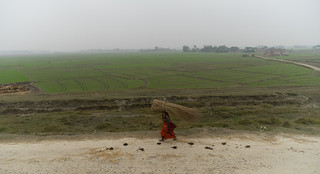
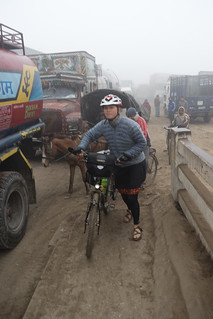
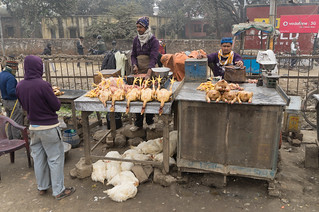

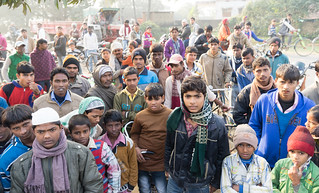
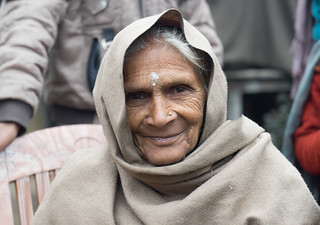
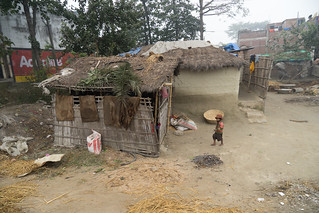
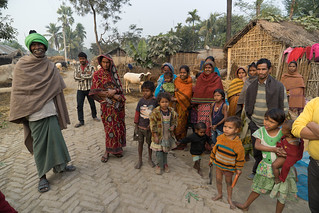

Fascinating post. I really enjoyed your made up quotes in the newspaper article! Remarkable (and difficult sounding) experience in a very different part of the world.
Very interesting to hear about a part of the world I had never considered visiting. Looked like a tough trip that you planned very well. I am also so grateful for my developed uncrowded town in Vermont.
This is a very well-written and detailed account of your experience cycling through Bihar. It’s clear that you faced many challenges, but also had some positive interactions with locals. It’s interesting to see how different the warnings you received were compared to your actual experience. It’s important to remember that personal experiences can vary greatly, and it’s always good to do your own research before traveling to any new place.
The descriptions of the landscape and people are very vivid and bring the reader right into the middle of the action.
It’s commendable that you were able to connect with locals and learn about their lives and perspectives.
The article raises some important questions about poverty, sanitation, and the caste system in India.